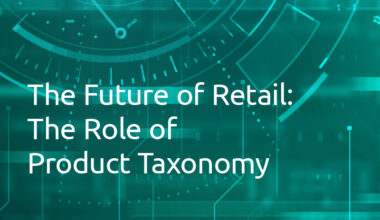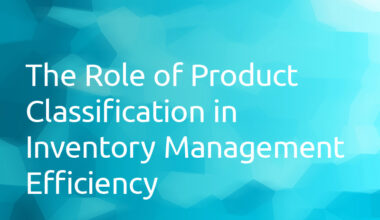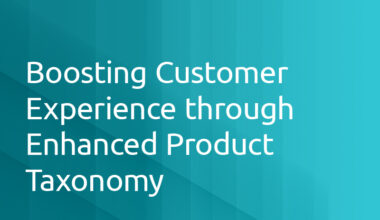Advanced technologies including AI and machine learning have had a transformative impact on the structuring and management of product categorization in the retail sector. As AI and ML continue to evolve, they offer innovative solutions to enhance user experience, streamline operations, and drive sales through optimized taxonomy.
The retail landscape is undergoing a technological revolution, with AI and Machine Learning at the forefront. One area where these technologies are making a significant impact is in the optimization of retail product taxonomy.
AI and ML in Product Taxonomy: The Basics
- Automated Categorization: AI algorithms can automatically categorize new products based on predefined criteria or by learning from historical data.
- Taxonomy Refinement: Machine learning models can analyze user behavior and sales data to suggest refinements or restructures in the taxonomy.
- Predictive Analysis: Predict future trends or shifts in consumer behavior, allowing for proactive adjustments to the taxonomy.
Key Benefits
- Enhanced User Experience: AI-driven taxonomies can adapt to individual user preferences, offering personalized navigation and product recommendations.
- Operational Efficiency: Automated categorization and taxonomy management reduce manual effort and errors.
- Dynamic Adaptation: ML models can continuously learn from data, allowing the taxonomy to evolve with changing market trends and consumer behaviors.
Real-world Applications
- Visual Recognition for Categorization: AI models can analyze product images to determine appropriate categories, especially useful for vast inventories.
- Natural Language Processing (NLP): Analyze product descriptions and reviews to refine categorization and understand user sentiment.
- User Behavior Analysis: ML algorithms can study how users navigate, search, and purchase to optimize taxonomy structures.
Challenges and Considerations
- Data Quality: AI and ML models are only as good as the data they’re trained on. Ensuring high-quality, accurate data is crucial.
- Over-reliance on Automation: While AI can handle many tasks, human oversight is essential to address nuances and complexities.
- Ethical Considerations: Using AI to personalize user experiences can raise privacy concerns. It’s vital to handle user data responsibly and transparently.
The Future of AI and ML in Product Taxonomy
- Deep Learning: More advanced neural networks can offer even more refined taxonomy structures and predictions.
- Integration with Augmented Reality (AR): Combining AI-driven taxonomy with AR can revolutionize the online shopping experience, allowing users to explore products in innovative ways.
- Real-time Adaptation: Future systems might adjust taxonomies in real-time based on live user behavior, ensuring the most relevant and efficient navigation.
AI and Machine Learning are not just enhancing retail product taxonomy; they’re revolutionizing it. By harnessing the power of these technologies, retailers can create dynamic, adaptive, and user-centric taxonomies that drive sales and elevate the shopping experience.
If your business could benefit from harnessing AI for your product taxonomy, contact us to find out how our data experts can help you and your business.
 1.416.619.5349 Ext.325
1.416.619.5349 Ext.325 







